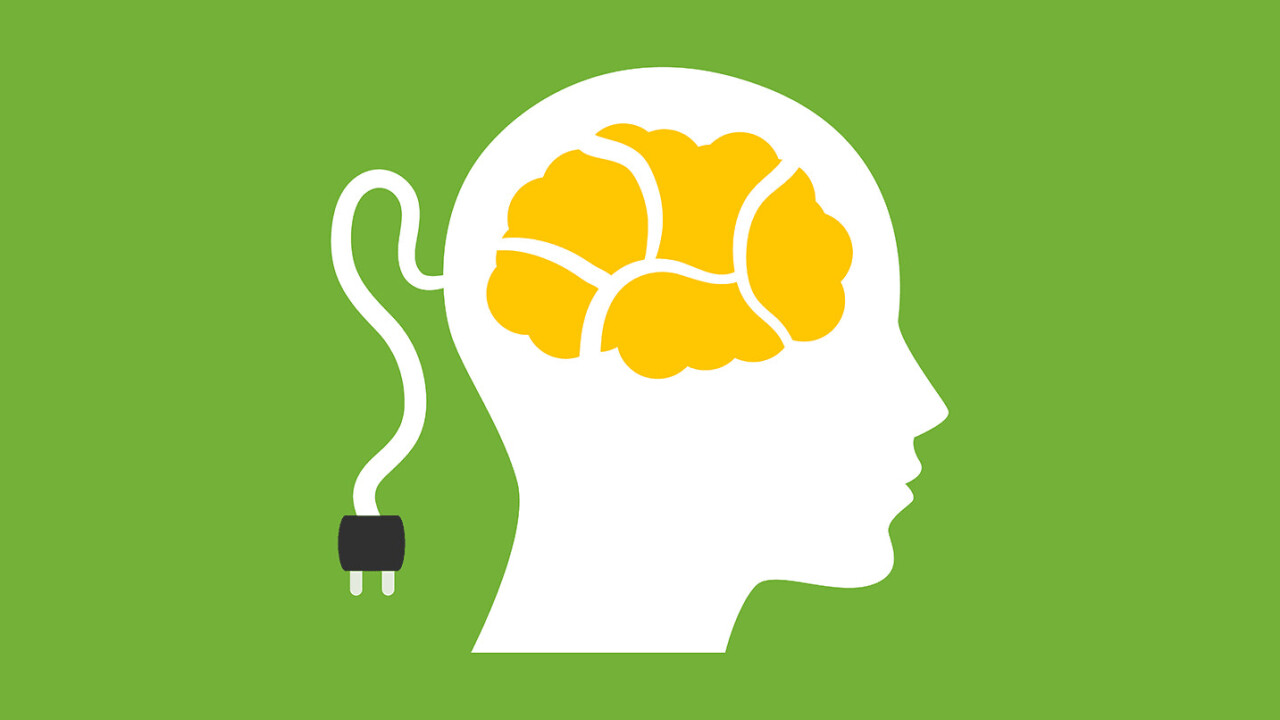
Before you hit send on that next email, imagine a future where you don’t have to. Something as simple as physically interacting with the send button will one day be a memory, a relic of a time in which people still needed to talk to their devices, or worse still, touch them.
As we advance the conversation around brain-connected devices, it’s clear we’re moved past the theoretical and into practical application. But you have to wonder whether keeping our brains secure, just as we’d lock down our laptop from hackers, is as high on the list of priorities as creating these connections.
At F8 today, Regina Dugan, VP of Engineering at Facebook’s top secret Building 8, shared with an awestruck audience two of the projects her team was working on. Each is decidedly futuristic, but on the horizon.
The first of these was a device using implanted electrodes that recorded firing neurons to help an ALS-stricken woman type with her mind. It’s impressive, but limiting. Currently the woman typed around eight words-per-minute, but advances in this technology could lead to speeds of around 100 words-per-minute, or at least that’s Facebook’s goal. To achieve it, Dugan’s team is working with more than 60 scientists and engineers at some of the top universities in the US.
The second used hardware that allowed deaf users to ‘hear’ sound through their skin. After capturing sound waves, software converts these into frequency components and transmits them directly to the brain, through skin. It’s a similar approach to how the cochlea allows each of us to hear by converting vibration into sound as we know it.
Both approaches help to advance a growing field of study. The future of interacting with our devices isn’t in keyboards, or voice interfaces, but in thought. Simply thinking an action will one day be enough to input it into your device.
And that’s where the trouble starts.
At the Enigma security conference in January, University of Washington researcher Tamara Bonaci explained an experiment in which a simple video game was used to harvest a neural response to subliminal imagery. The experiment used innocuous images, such as corporate logos to measure a reaction to the stimuli. It was simple and harmless, but Bonaci detailed the ways in which the same experiment could harvest more sensitive information, such as political leanings, prejudices, and religious beliefs.
She told Ars Technica:
Electrical signals produced by our body might contain sensitive information about us that we might not be willing to share with the world. On top of that, we may be giving that information away without even being aware of it.
Bonaci’s BCI, or brain-connected interface, was a simple one. Using seven electrodes, the machine connected to a player’s head and measured EEG waves in real-time. It wasn’t at all like the complex machine Facebook describes. This was a tool of measurement, not a futuristic control device.
But what happens when the signal travels both ways?
In order to achieve the perfect input device, the connection will have to carry a two-way signal: to the brain for programming, updates, and bug fixes, and from the brain to control the device. If the simplistic (by these standards) BCI Bonaci’s team created was capable of rudimentary brain hacking, imagine a future where your computer is essentially an extension of your brain, and vice-versa.
While most of us fear the impact of tracking cookies sending data to analytics firms and advertisers, the future could very well consist of our brains being connected to the devices responsible. Instead of measuring affinity for a brand, or displaying relative ads by monitoring your content consumption, the future of security could pull these thoughts directly from your brain itself.
Worse, once the connection is made, there’s little limiting the amount of data we’re sharing, aside from trust in corporate entities not to exploit us. I can almost hear the eye-rolling. And really, is there no one else questioning why Facebook — one of the world’s largest advertising platforms — added this to its 10-year roadmap?
I’ll leave you with another terrifying thought. After we’ve made the connection, we’ll be communicating with our oft-used devices using nothing but our mind. It’s worth being excited about, but cautiously so, and only with answers to significant questions, like: How do I disconnect from AR/VR headsets, fitness trackers, laptops, mobile devices, smart home technology, and my connected car when each is connected to my brain?
Or, better still, what security measures are in the pipeline to ensure each of these devices isn’t sharing more data than I’m comfortable with?
Get the TNW newsletter
Get the most important tech news in your inbox each week.





